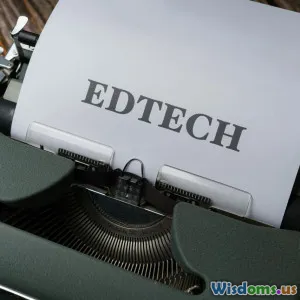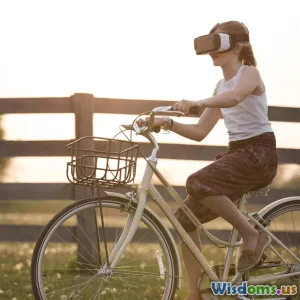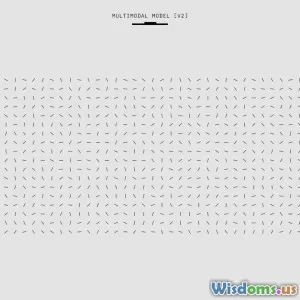
Are Traditional Lectures Obsolete in the Age of EdTech
8 min read Explore the relevance of traditional lectures in today’s EdTech-driven learning landscape and how education is evolving. (0 Reviews)
Are Traditional Lectures Obsolete in the Age of EdTech?
Education has witnessed radical transformations over the past few decades, with the integration of digital technology revolutionizing how students learn and educators teach. The question often arises: are traditional lectures—those timeless, instructor-centered monologues delivered in a classroom—becoming obsolete in the era of Education Technology (EdTech)? This article dives deep into the state of traditional lectures, exploring their relevance, challenges, and how EdTech shapes the future of learning.
Introduction
Traditional lectures have been the backbone of formal education for centuries. They emphasize passive knowledge reception, where students listen and take notes as an expert imparts information. In recent years, however, the explosion of digital platforms, interactive apps, and online learning ecosystems challenges their dominance. From MOOCs (Massive Open Online Courses) to adaptive learning software, students now have unprecedented access to customized, anytime-anywhere learning.
But does this mean lectures are obsolete? Or do they still hold value in nurturing knowledge, critical thinking, and human connection? Let's explore.
The Legacy of Traditional Lectures
Historical Significance
Since the medieval universities in Europe, lectures have been central to education. Professors delivering content was often the only way to disseminate complex ideas before widespread printing and digital documentation. The lecture hall setup fosters direct student-instructor interaction and the challenge of real-time teaching.
Advantages
-
Structured Delivery: Lectures provide a guided, curated path through a subject’s complexities, ensuring foundational topics are covered systematically.
-
Expert Perspective: Live lectures give students direct access to experienced educators who can clarify nuances and engage with immediate questions.
-
Community and Social Learning: Gathering in a shared environment fosters peer discussion, boosting motivation and collaborative comprehension.
The Drawbacks
Despite these benefits, traditional lectures often suffer from issues such as:
- Passive Learning: Students frequently remain passive recipients rather than active constructors of knowledge.
- One-Size-Fits-All: Lectures typically do not cater to individual pacing or diverse learning styles.
- Limited Feedback: Real-time feedback may be minimal, particularly in large classes.
A 2014 study by the University of Maryland found that students retained only about 5% of lecture content in traditional setups after one week without supplementary materials.
The Rise of EdTech: Transforming Learning
Education Technology includes a vast range of tools, from learning management systems (LMS) to virtual reality (VR) classrooms. Its central promise is to enhance engagement, accessibility, and personalization.
Personalized Learning Paths
Adaptive software like DreamBox Learning (for math) or Knewton uses algorithms to tailor instruction to individual student's strengths and weaknesses. Students progress at their own pace, transforming education into a dynamic journey rather than a fixed script.
Flip the Classroom
The "flipped classroom" model, popularized by educators such as Aaron Sams, reverses traditional teaching. Students watch lecture videos asynchronously at home and then use classroom time for exercises and problem-solving under teacher guidance. This approach leverages EdTech to resolve the passive learning issue inherent in traditional lectures.
Data-Driven Insights
EdTech platforms collect metrics on student progress, engagement, and outcomes, enabling educators to identify struggles early and adapt methods—a feat impossible with a one-hour lecture alone.
Accessibility and Scale
Online courses like those offered by Coursera, edX, and Khan Academy provide free or affordable education worldwide, breaking down geographical and socio-economic barriers.
Case Studies: EdTech vs. Traditional Lecturing
-
Harvard Business School's HBX Program: Integrates interactive digital case studies and simulations, moving beyond traditional lecture techniques, resulting in higher engagement and retention.
-
MIT’s OpenCourseWare: Open online access to course materials, including video lectures, allows self-paced learning but lacks the communal and interactive components of face-to-face settings.
-
Khan Academy: Utilizes micro-lectures (often under 15 minutes) combined with practice exercises, improving knowledge retention by chunking content and promoting active participation.
These examples illustrate that while traditional lectures play a role, EdTech's interactive and personalized strategies offer superior learning outcomes for many.
Can Traditional Lectures Coexist with EdTech?
Rather than a simple either/or, the future likely blends traditional elements with technology. Hybrid models combining in-person discussions with digital preparation materials harness the best of both worlds.
Teaching Presence and Human Connection
A key limitation of pure EdTech environments is often the loss of immediate human interaction, mentorship, and emotional connection which motivates learners. Teacher-led discussions and direct mentorship remain critical, especially for complex subjects or soft skills.
Examples of Integration
-
Live Polling and Real-Time Quizzes: Tools like Mentimeter allow lecturers to transform passive talks into interactive sessions.
-
Augmented Reality in Science Classes: EdTech supplements lectures by visually enhancing abstract concepts, such as exploring molecular structures in 3D.
-
Flipped Learning Models: Students preview materials online and use lecture time for deeper analysis, benefiting from both personalized pace and guided expertise.
Challenges and Considerations
EdTech is not without hurdles.
- Digital Divide: Unequal access to devices and high-speed internet can disadvantage some learners.
- Quality and Overwhelm: Not all digital materials are created equal; students may face cognitive overload from fragmented content.
- Training Educators: Teachers require skills and support to effectively integrate EdTech without sacrificing core pedagogical goals.
Successful adoption demands careful design, institutional investment, and ongoing evaluation.
Conclusion
Traditional lectures are not entirely obsolete, but their form and function are undoubtedly evolving. They remain valuable for structured expertise, human mentorship, and social learning, especially when augmented by carefully chosen EdTech tools.
The age of digital education invites us to rethink rather than reject lectures—to embrace flexible pedagogy that balances instructor presence with interactive, personalized, and accessible technology-driven approaches. For learners and educators willing to adapt, the fusion of traditional wisdom with innovative EdTech offers an enriched, inclusive educational future.
Ultimately, whether lectures vanish or evolve depends on how educators leverage emerging technologies without losing sight of human connection—the heart of effective learning.
Rate the Post
User Reviews
Popular Posts





















